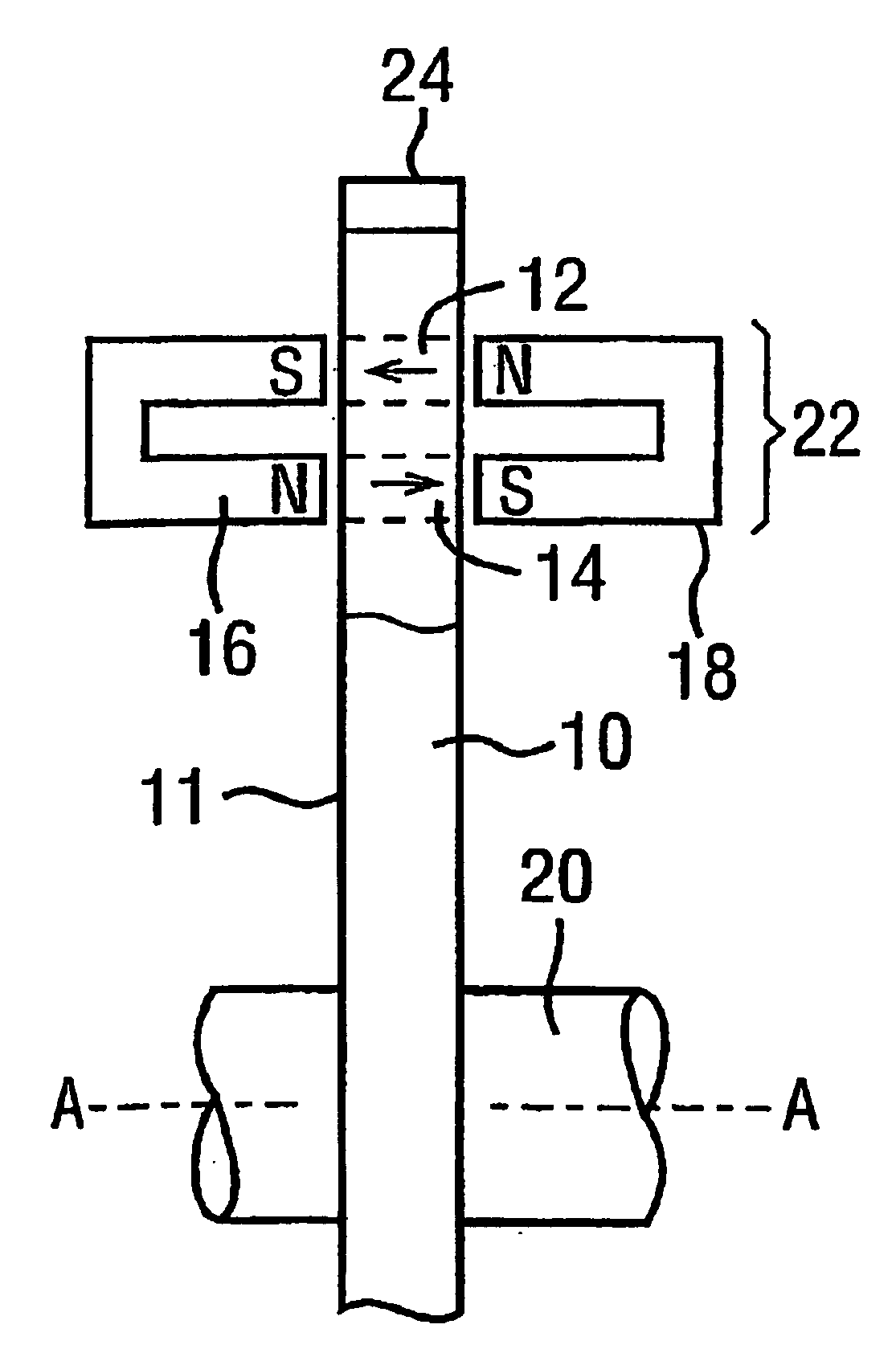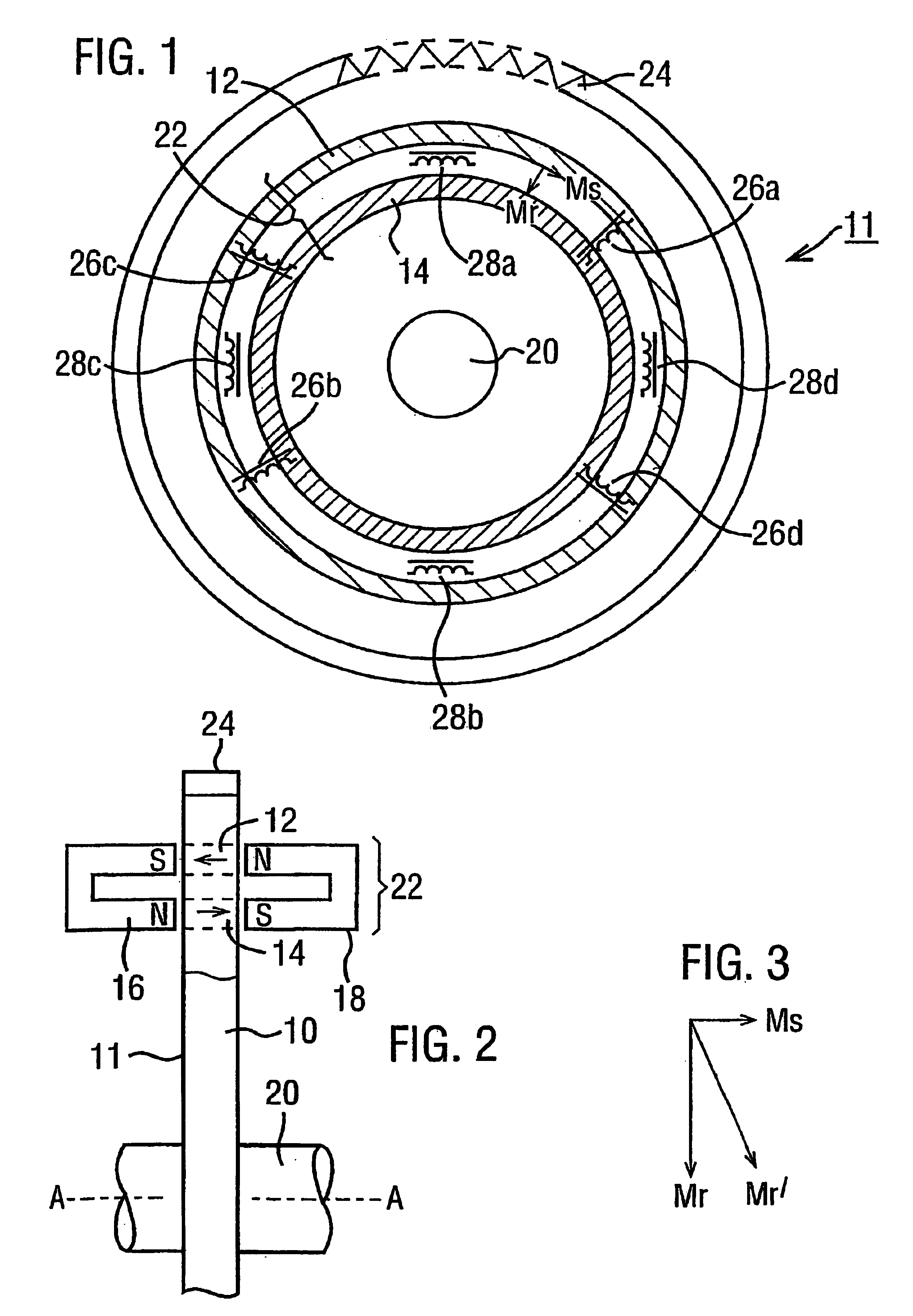Magnetic-based torque/speed sensor
a torque/speed sensor and magnetic technology, applied in the direction of measuring devices, instruments, devices using electric/magnetic means, etc., can solve the problems of increasing the weight of the battery, not being able to reliably and economically ascertain the torque transmitted in the chain wheel,
- Summary
- Abstract
- Description
- Claims
- Application Information
AI Technical Summary
Benefits of technology
Problems solved by technology
Method used
Image
Examples
Embodiment Construction
[0043]Start with the case that FIGS. 1 and 2 represent a chain wheel. The shaft 20 is coupled to the usual pair of opposed pedal cranks and the sprocket teeth communicate the rotational drive on the sprocket wheel 10 to the cycle chain. If the sprocket wheel is of magnetisable material that has been premagnetised as described with reference to FIGS. 1 and 2 for example, torque measurement can be made by appropriate placement of magnetic field sensor devices. It is assumed here that the cycle has an appropriate source of electrical energy for the torque sensing and signal processing circuitry. In the context of motor-assisted propulsion as discussed above, there will be an electrical battery source. Sensor devices and the accompanying electronics can be made in very compact, light form and can be placed adjacent the inside surface, i.e. inner, frame-side, surface, of the chain wheel so as to be out of the way of the cyclist. The magnets and sensor(s) can be mounted to the frame.
[0044...
PUM
| Property | Measurement | Unit |
|---|---|---|
| angles | aaaaa | aaaaa |
| angles | aaaaa | aaaaa |
| angles | aaaaa | aaaaa |
Abstract
Description
Claims
Application Information
 Login to View More
Login to View More - R&D
- Intellectual Property
- Life Sciences
- Materials
- Tech Scout
- Unparalleled Data Quality
- Higher Quality Content
- 60% Fewer Hallucinations
Browse by: Latest US Patents, China's latest patents, Technical Efficacy Thesaurus, Application Domain, Technology Topic, Popular Technical Reports.
© 2025 PatSnap. All rights reserved.Legal|Privacy policy|Modern Slavery Act Transparency Statement|Sitemap|About US| Contact US: help@patsnap.com



